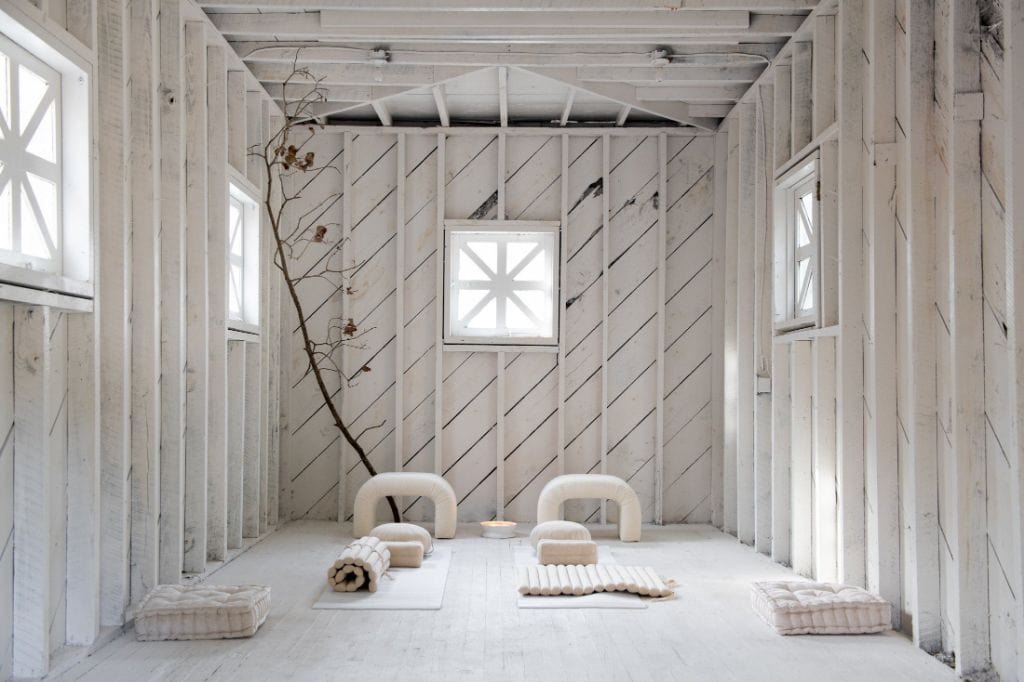Meditation has become an increasingly popular practice for reducing stress, improving focus, and promoting overall wellbeing. When done regularly, meditation can have transformative effects on both mind and body. Creating a space conducive to meditation in your home can help support and strengthen your practice.
Choosing a Room
When selecting a room for your meditation space, choose one that is quiet, peaceful, and removed from the busyness of your home. A bedroom, den, or spare room works well. You’ll want a space where you can close the door and not be disturbed. Make sure the room gets plenty of natural sunlight during the times you plan to meditate. If the room lacks windows, consider adding a salt lamp or other soft lighting.
Clearing Clutter
Clutter competes for your attention, so removing it helps clear and focus the mind. Take everything nonessential out of your mediation room. Store extra furniture, electronics, exercise equipment, boxes, and other items elsewhere. Keep only an absolute minimum of furnishings and décor items. The emptier the room, the better for supporting meditation.
Choosing Flooring
Install comfortable flooring that enables you to sit, stand, or walk barefoot during meditation. Thick pile area rugs and yoga mats provide cushioning over hard flooring. If you prefer meditating while seated, use a firm yet supportive cushion or meditation bench. Allow enough open floor space to stretch out fully when lying down.
Adding Decorations
While you want to limit clutter, certain decorative elements can enhance your meditation space. Include natural elements like houseplants, flowers, seashells, stones, crystals, or sand. Soft lighting like table lamps, paper lanterns, or fairy lights installed on the ceiling creates a calming ambiance. Hang sheer curtains over windows to filter harsh sunlight. Display meaningful spiritual symbols or artwork. Add a small water feature such as a tabletop fountain or zen garden.
Using Aromatherapy
Introduce calming scents into your meditation room with aromatherapy. Burn incense or light a soy or beeswax candle before your session. Essential oils like lavender, chamomile, and bergamot promote relaxation when diffused into the air. For convenience, use an electric aromatherapy diffuser. Or put a few drops of oil onto a tissue or cotton ball. Experiment with different aromas to find those most soothing.
Playing Background Sounds
Soft, steady ambient noise can enhance meditation by masking distracting sounds from elsewhere in your home. Try playing recordings of gentle rainfall, ocean waves, trickling streams, or birdsong. For a lower-tech option, use a small tabletop fountain or water feature. Or install foam soundproofing panels on walls to absorb outside noise.
Adding Comforts
Make sure your meditation space has some simple comforts. Keep a basket with extra cushions, blankets, shawls, and socks to stay warm during sessions. Use a small table or shelf to hold any items you use regularly like journals, candles, essential oils, mala beads, or devotional objects. Install dimmable lights you can adjust to set the desired mood.
Choosing a Focal Point
Create a focal point in your meditation room that you can look at to help settle and focus your mind. This may be a small altar, statue, painting, or anything visually interesting. Place it at eye level when seated. Keep it simple without too many items competing for attention. The focal point gives your eyes a resting place during meditation.
Minimizing External Distractions
To prevent disruptions during your meditation practice, take steps to minimize external distractions within the space. Turn off all electronics like TVs, phones, computers and music. Draw the blinds or curtains to block excess light and mute outside noise. Put up a do not disturb sign. Silence any clock alarms or other timers. Doing this each time trains your mind to associate the room with uninterrupted inner reflection.
Establishing a Regular Routine
Using your meditation room at the same time each day establishes a routine for your mind and body to anticipate and prepare for practice. Commit to a consistent schedule, whether first thing in the morning, midday, or before bed. Over time, you will begin to enter a calm, focused state of being just by entering the room as you form an association between the space and meditating.
Keeping it Simple
Resist the urge to overdecorate or clutter your meditation room. The space should be simple, clean, and decluttered. Too many furnishings, plush pillows, or ornate designs compete for your attention. The emphasis should be on empty space and simplicity. This allows your mind to calm and focus without distraction. Follow a minimalist, intentional approach to decorating.
Conclusion
Creating an ideal environment in your home for regular meditation helps strengthen and support a consistent practice. By choosing an unused room, removing clutter, adding calming elements, minimizing distractions, and establishing a routine, you can set yourself up for meditation success. With a space that promotes inner quiet and reflection, you’ll reap the full benefits of meditation.


